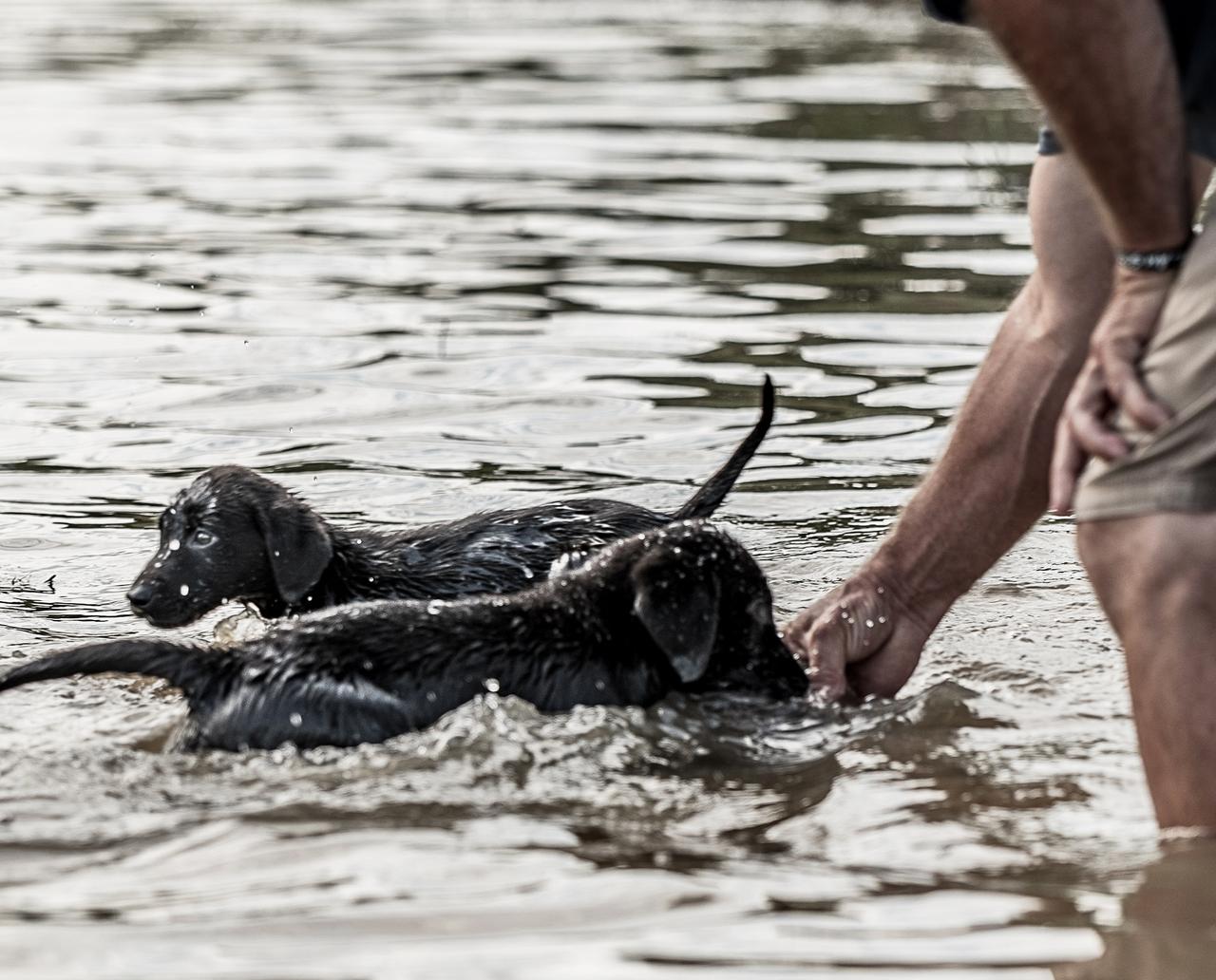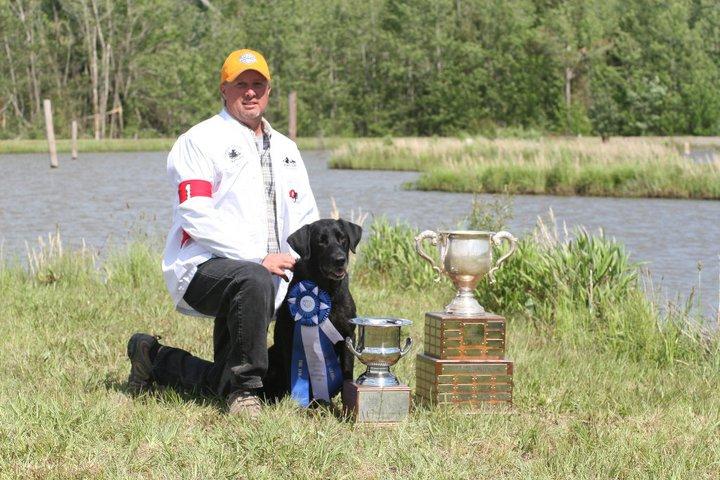
The RIGHT Way to Introduce Your Retriever Pup to Water
Posted by Lyle SteinmanMy method for introducing a young dog to water is linked to my expectation that the dog comes from a line of retrievers that absolutely relish the challenge of water work, whether it’s during a hunt test, field trial or waterfowl hunting. Start with good genetics. Are your pup’s parents fond of water? Do they plunge into the water with vigour regardless of temperature? I hope your answer to those questions is yes, because that makes your job of developing a water dog much easier.
My focus on getting a pup into the water for the first time isn't so much about the water itself as it is about capitalising on that pup's retrieving desire. You can take this to the bank: Retrieving desire will always overcome shortcomings in the talent department.
When I say 'retrieving desire', I'm not referring to a dog that gets excited about chasing tennis balls and squeaky toys. I'm talking about a dog that goes mad for chasing down feathers, and by feathers in this instance I mean live birds. Before moving on to introducing them to water, increase that retrieving desire by allowing your pup to chase and catch wing-clipped pigeons on land. The thrill of that experience and the subsequent confidence it instils will carry straight over to water training.
OK, time to actually get in the water. There are ideal conditions for this important moment, and if I could custom order every aspect of it, I’d want a sunny day where the air temperature is 18-24°C and the water temperature is around the same. Then, if possible, I’d like to make this critical water introduction at a boat ramp. A concrete ramp allows sure footing and presents a gradual entry into the water. For even the most timid dog, it’s not going to get much better than this.
Put your swimming costume on or roll up your trouser legs and wade in. If you reckon the water's nice, then it probably is and your dog will think so too. Now, having checked that conditions are perfect, take your dog out for a little walk. Keep a check cord on it so you're always in control. If it wants to go into the water on its own, that's brilliant. If not, this is when you get to take advantage of that retrieving desire to ensure this is a fantastic first water experience.
Wade out into the shallow water, maybe ankle-deep, and entice your pup with a wing-clipped pigeon. Flip the bird into the water where it will flutter about and, if all goes well, your pup will quickly learn that water and birds go together, and both are fun.
Some pups will love the water so much you’ll wonder how you ever could have worried about this critical step. Others will need a little more coaxing and time to build their confidence. No matter what your situation, the most important thing I can stress is this: Let the pup make its own decision to enter the water! Never, for example, pull your dog into the water. This is not a time to rush things.
Let me add one more important note on timing. I’m often asked if there’s a 'best' age to introduce a pup to water. My answer is the younger the better. I certainly understand there may be logistical problems with getting a young dog into the water in ideal conditions if you live in a northern state. If you have a pup born in the autumn, you might not get the perfect conditions I mentioned until May or even June. So, improvise. You could let your little pup splash about in the bathtub, raising the water level a little bit with each bath time. You could even get a paddling pool and put it in your basement or heated garage to provide a fun learning experience. It’s not a place where they can really swim, but water is water and if it’s a good experience for your pup, you’re making progress.
You definitely do not want to wait until your dog is half grown before it gets its feet wet. After all, you're raising a water dog, aren't you? When it comes to dogs and water, I’m a firm believer in what I call the roller coaster effect. What I mean by that is that children who ride roller coasters at a young age tend to like them and seek out bigger, better and faster roller coasters as they grow older. I, on the other hand, was never into roller coasters as a child and you couldn’t pay me to get on one today.
Take the time to make the all-important introduction to water a good experience for your dog. If you do your part, your retriever is going to make you proud for many more years.

Lyle Steinman
Gower, MO
Lyle Steinman began his competitive career at the age of eight, travelling all over the United States showing cattle. He won more than 300 championships at the county, state, and national levels throughout the following 10 years. Lyle competed with Labradors as an amateur for many years before turning a...
